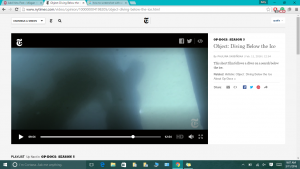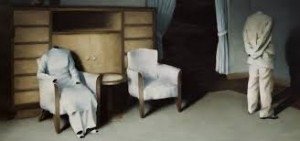Thoughts on the Argument Paper
I feel like I will be able to incorporate other outside sources and correctly put them into my writing. I am worried about finding good relevant counter-arguments that will help back up my personal argument. My idea I think is close to another writer in the forum or at least, has some alike ideas and I am curious to see if I can compare and contrast to make my argument stronger. One other thing that I am unsure about is that which arguments to use that are counter to mine because the other writers do have necessarily opposing ideas but more of different approaches. I am also worried about how I will set up my paper and where to place which paragraph.
Taking a Different Approach
While researching and reading through The New York Times it is so fascinating to see how many different points a view that can come from one topic. Before discovering the “Up for Debate” column in the NYT I never thought of all the many ways to look at one argument. For example, I am researching the diagnosis of A.D.H.D on children and the stances range from too quick to diagnose to white children are more likely to be diagnosed than black children. It is interesting to read the views and see how they connect and contrast between each other.
Another impactful thing I read this week was an easter card from my mom. Her words of love, prayer, and strength are helping me get through my busy week of tests and work. Her card came unexpectedly but at a perfect time as most things like that so often do. Reading her easter card reminds me of how blessed we are to be able to do what we can today. Also, that every day is a gift and that we should take advantage of each day living it to the fullest.
Library Session
During the library session, it opened my eyes to a lot of the amazing resources that are available to students at Ole Miss. It was great to know that I can access any of these websites and sources whenever I need them. I had heard about the sources that the library offers but had never known how to navigate through them. At the session, I learned how to access everything and what is the best source for the project that I am working on. Another great thing that I discovered is that there is a librarian for every major. This is a great resource to know about for when I enter more into my major classes.
Break Down: Visual Rhetoric
During my paper, I wrote about the absence of identity and how the filmmaker never actually states what the diver is doing. This element of not being straight forward about the mission of the diver keeps the audience guessing and grabs their attention to figuring out what this video is all about. However, during this section of the film, is the first and only time that the viewers get a glimpse into the heart heavy task that the diver is carrying out. Once the audience sees this scene they are being pulled by the element of pathos, in a way that everyone can connect to in some way. The reason for this is because during this part of the film the audience sees the diver retrieving another fellow diver and bring them up from the bottom of the ice. After this scene, the audience can start connecting what the rest of the Op-Doc has been showing and the directors statement. When the viewers see that they’re retrieving a deceased diver the information in her director’s statement about “the grave” and “the object” starts the become clear. Also, there is some clarity for the first scene shown of the ice when there were two objects below the ice and the audience is trying to figure out what these objects were as if the director was foreshadowing what was to come.
The image above represents the activity we did in class that made us break down the Op-Doc in a way that we had to answer three questions. The questions were How,Why, and So what. This meant how did the director carry out their message, Why did they use that technique to do so, and so what did that do for the readers and the film. This activity helped me figure out a way of how to approach the assignment. Before we looked at how to break down the video with these three questions and take it deeper I had no clue of the direction I wanted to take this project. Once I was able to answer the questions about the whole video I then could answer these three questions about more specific parts of the film such as the visuals, sounds, and in my case the absence of certain elements. With having the three questions in mind I also could create my main idea and they became the bases of development for my whole paper. Since I completed this task I was able to see what I was going to focus on throughout my analyze.
I chose this image of people with no faces and an empty chair becuase this shows the absence of idenity and language. My thesis for this paper discussed the absence of idenity and the use of visuals and sounds that heightened the intensity of not knowing what is it that the director is filming. The people in this picture have no faces/heads which means they have no idenity and the empty chair symbolizes the absence that I discussed within my thesis. The director also never used dialog in the film, which become unnesscary by the visuals and angles she used within the film. The picture above displays this with not having a face.
Learning from Others
Outside of The New York Times, in writing, we had a peer review where I was able to read and suggest ideas to another student. This task helped me in my own writing in the way that it mad me think about what elements did this student us that I could use in my own paper. This made an important impact on me because it helped me make my writing stronger as well as helping someone else make a strong paper.
Within The New York Times, I read an article over sharing on social media between the family. The article “Don’t Post About Me on Social Media, Children Say” discusses the reactions of parents and children when it come to sharing photos of each other and life moments. The children were the most outspoken when it came to not wanting their pictures to be shared. This creates the argument of what is OK to share and what isn’t and should parents share the early moments of a child’s life before they can give consent. The article opened my eyes to this issue because I have never thought of it that people could have a problem with their parents sharing funny or special moments in their children’s lives. I see the point of the children in that they want to monitor their digital identity but I also see the side that the parents have a right to share their story that happens to include their children. I agree that the parents should think further in advance when deciding what to share and post. Also, the possibility of not allowing their children’s friends to follow these account in order to avoid embarrassing remarks towards the parent posts.
Confessions of a Writer
In grammar and writing, there is always something that someone struggles with. Personally, my most common mistake is not rereading my paper. I always end up convincing myself that since I was the one writing I already know what is on the paper so why reread it. Confession: I typically have someone else do if for me because I can’t get myself to do it. Although, I know my papers need rereading and editing it’s always hard to make myself sit down and do it.
#GoingDeeper
#Goingdeeper
This is the hashtag that I would give to analyze because when you’re analyzing a piece you are going deeper into the meaning and almost what is “behind the scenes”. When doing an analyze one most find the deeper reason for why the author chose to do something or why they included/didn’t include something. It really makes you think further than summarizing the document.




 Welcome to My Thoughts
Welcome to My Thoughts